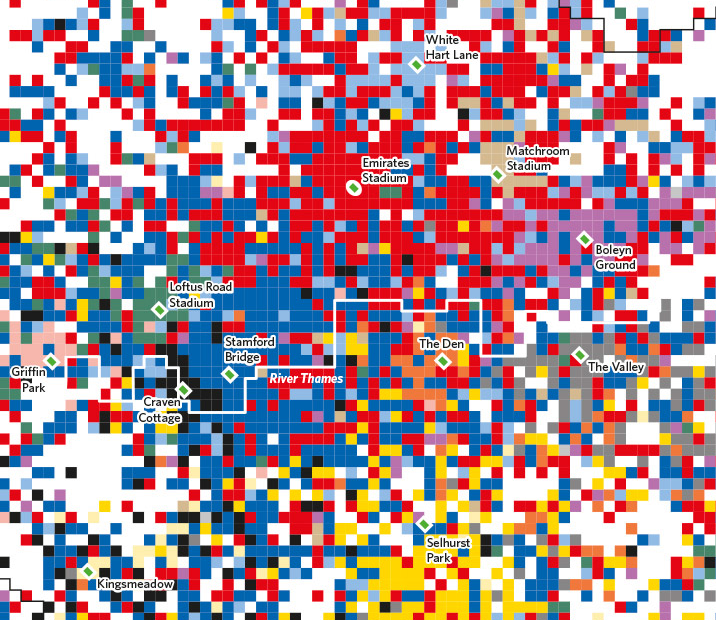
London has many football clubs – but where in London do their supporters live, work or go out? In the area immediately near their hallowed grounds, or far away. Are there some clubs that attract a wide support from across the capital? Are there sharp dividing lines in the city, between rival supporters of closely-located clubs?
All these questions and more can be answered by this striking Twitter analysis of tweets relating to the clubs. Muhammad Adnan and Guy Lansley at UCL collected “tweets” (with attached location) over the 2013/14 football season, looking at hashtags related to each club and then mapping the most popularly tweeted club in a 500m x 500m grid covering London. The smaller clubs tend to have a core support near the stadium itself, while the larger ones have a more dispersed popularity but still a core area of near-unanimous support, by the stadium itself. James Cheshire (Mapping London co-editor) then assembled this vivid graphic of the data.
I like the use of the grid squares here – it removes the distractions of both natural features (except the Thames) and political boundaries (except London’s own boundary) and lets the football colours do the talking, in a Jackson Pollock-esque way. The bright colours match the traditional colours of the teams – the central London area dominated by the reds vs the blues (Arsenal vs Chelsea), with Crystal Palace covering a large area of south London -but then they did have an interesting season…
We’ve featured a similar map of football supporters before, plus a map of the travelling locations of the clubs themselves.
Excerpted from the website for The Information Capital. The book itself is out on 30 October, buy a copy here.

Nice work. How did you manage to scrape geo-data for so many tweets?
I’ve tried to scrape the Twitter API using the club hashtags with twitteR, and it only returns a couple of dozen geo-codes.
Cheers,
Ben
I didn’t collect the data myself, but colleagues here did. It was over a long period of time, and with a continuously running collector. Also – twitter has made it harder to get the data these days. You’ll need to use the streaming API rather than the search API.
@Block19Anon @TheFamousCFC_V1 @FinnAFC you ever seen this map – based on tweets so automatically counts out many of… https://t.co/I96yPpdWca